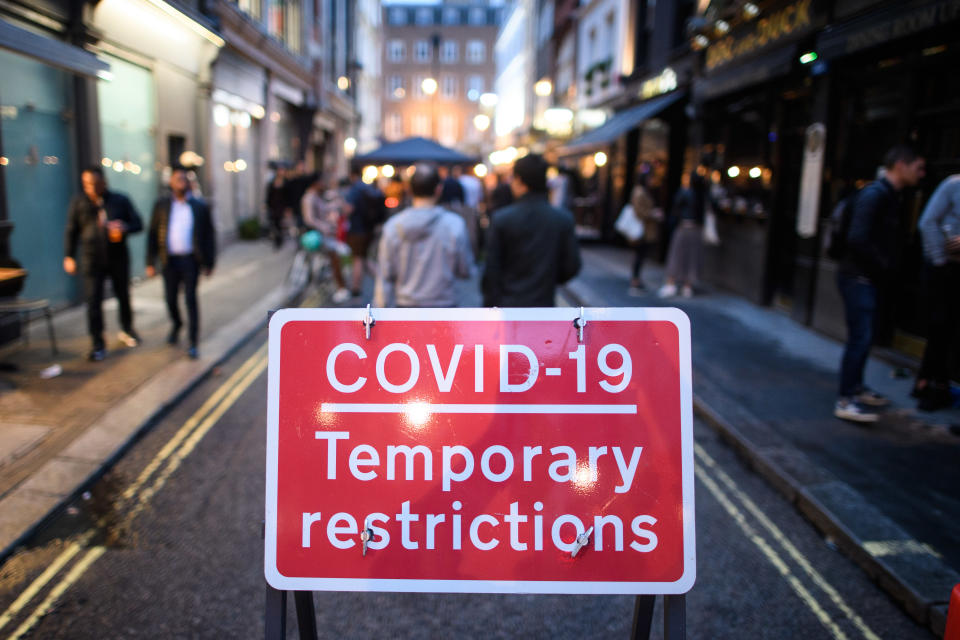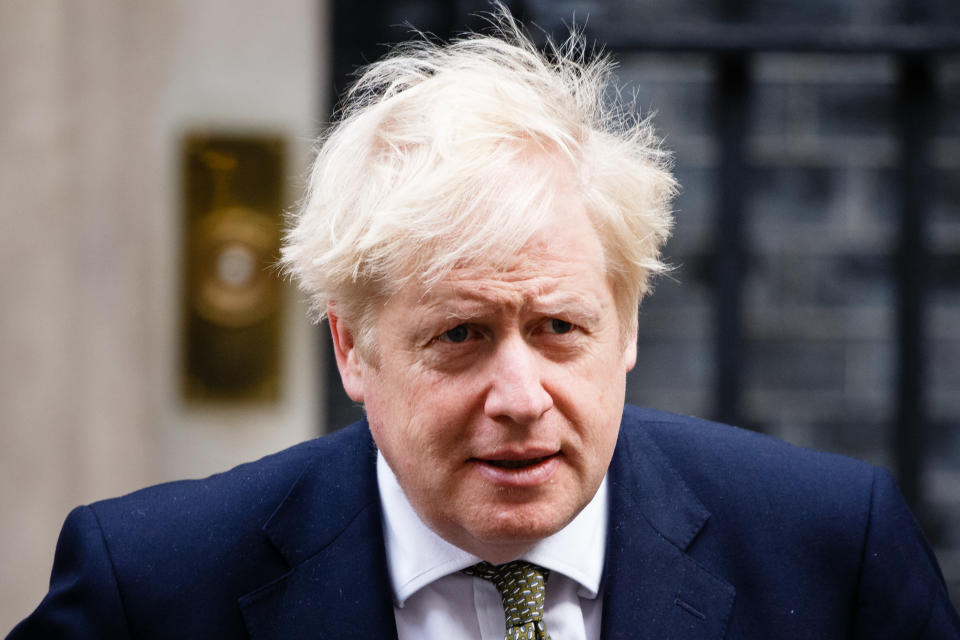Government insists national lockdown is wrong approach despite '96,000 new cases a day'
Watch: Circuit breaker lockdown ‘not the right approach’
As coronavirus cases in England continue to increase, the government continues to resist pressure to implement a second national lockdown.
Data from round six of the Imperial College London Real-time Assessment of Community Transmission (React) study estimates there are around 96,000 new infections per day, and found early signs that numbers in low-risk areas are following trends observed in the worst-affected regions.
Professor Paul Elliott, director of the React programme at Imperial from the School of Public Health, said: "We are in a critical period of the second wave of the epidemic.
"We are seeing an increasing rate in the virus in all regions.
"Whatever is happening – be it behaviour (of the public) or implementation of current policy – it has not been sufficient to turn down that rate of increase."
The study took tens of thousands of randomly selected people and tested whether or not they have symptoms roughly every month.
The results, which have not yet been peer-reviewed, show 96,000 people a day are being infected, almost as many as at the peak of the first wave.

Communities secretary Robert Jenrick acknowledged that coronavirus rates are in a “bad place” all over the country but added that the government is resisting another national lockdown.
The calls for tougher restrictions come as France is set to enter a second lockdown from Friday, while Germany is also imposing a four-week partial lockdown after a record rise in cases as the country’s test and trace system have become overwhelmed.
On a national lockdown, Jenrick told Sky News: “We will continue with our localised but proportionate approach on taking action where the virus is strongest, but you can see from those figures that the virus is in a bad place in all parts of the country.
“The approach of trying to bear down on it where it is most concentrated, I think, continues to be the best way forward because despite the fact the virus is rising across the country it is very concentrated in some places nonetheless.”
Jenrick said the government’s “very firm view” is that a short national “circuit-breaker” lockdown – which Labour leader Sir Keir Starmer has called for – would be the wrong approach, adding “you can’t have a stop-start country”.
But Steven Riley, professor of infectious disease dynamics at Imperial College London, said the data from the React study suggests “we need to think about changing the approach”.
Asked if this meant tightening local lockdowns or national restrictions, he told BBC Radio 4’s Today programme: “I think what our study shows is there would be genuine benefits to some kind of national policy.
“In that we could prevent the pattern in the South turning into the current pattern in the North and bring about a reversal in the North as quickly as possible.”
Government scientific adviser Dr Mike Tildesley also said more national restrictions were needed, with the current trajectory likely to put nearly everywhere in Tier 2 before Christmas.
The University of Warwick researcher, who sits on the Scientific Pandemic Influenza Group on Modelling (Spi-M), told BBC Radio 4’s Today programme: “We are seeing the R number is greater than one everywhere, and in a sense some kind of national lockdown, a circuit-breaker, or something along those lines, would actually have more effect in those parts of the country that have not yet progressed into Tier 2.

“R is greater than 1 everywhere and if we don’t take urgent action we’re most likely to see that as we’re approaching the festive period we’re probably going to be at least in Tier 2 pretty much everywhere in the country.
“So really we need to move away from these regional firefighting techniques to try to move to something more national.”
Dr David Strain, clinical senior lecturer and honorary consultant at University of Exeter Medical School, also pushed for tougher restrictions – including the removal of any household mixing under the rule of six.

He told the Today programme: “The rule of six is fundamentally flawed – it allows people to spread the virus around multiple households completely legitimately.
“Yet this is permitted indoors in Tier 1 and outdoors in Tier 2. All of these mean the virus is still growing.”
While not pushing for a full lockdown, Jenrick acknowledged that people had been left “fatigued” and “frustrated” by coronavirus restrictions but urged the public to “see the seriousness of the present situation”.
Watch: What is long COVID?
Coronavirus: what happened today
Click here to sign up to the latest news and information with our daily Catch-up newsletter

 Yahoo Movies
Yahoo Movies 


